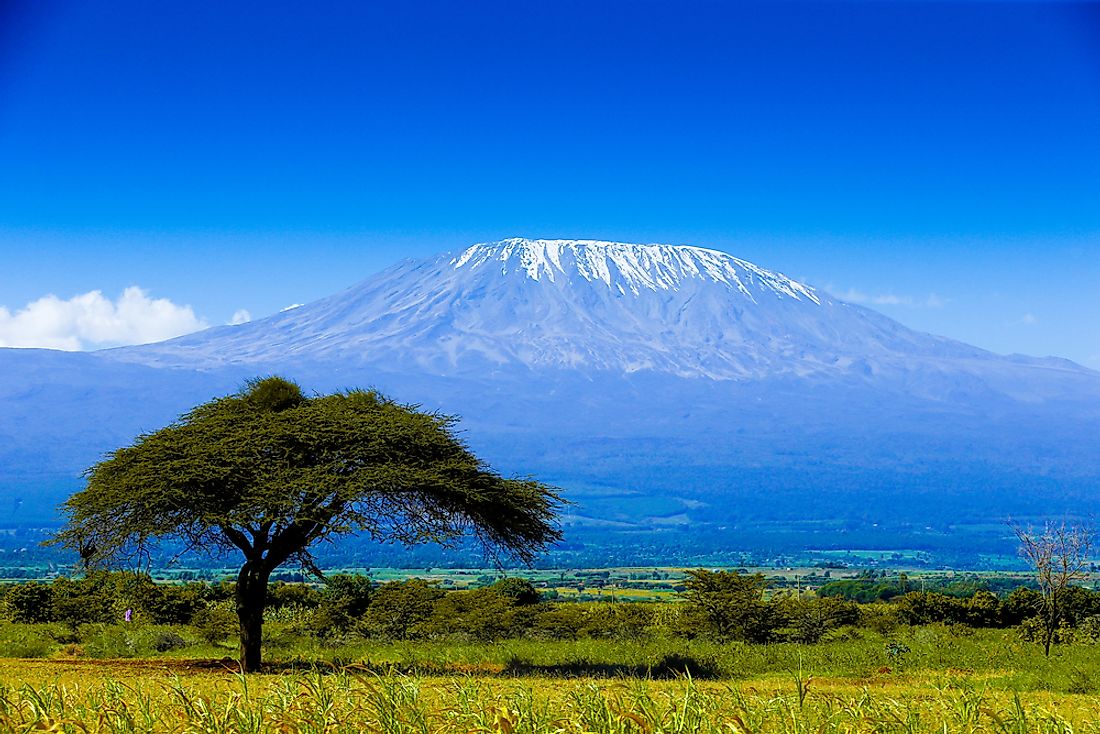What Is a Stratovolcano?

A stratovolcano is a tall volcano shaped like a cone, formed by various layers of materials such as volcanic ash, hardened lava, pumice, and tephra. Stratovolcanoes are steep and have periodic explosive and effusive eruptions, although some have calderas, which are collapsed craters. The highly viscous lava that flows from this type of volcano cools and hardens and in turn does not spread far. The magma that forms this lava is generally felsic. Stratovolcanoes are more common than shield volcanoes. One of the famous stratovolcanoes is Vesuvius which destroyed Herculaneum and Pompeii in 79 CE.
Formation of Stratovolcanoes
Stratovolcanoes occur mostly in subduction zones, where the oceanic crust slides under continental crust. The descent of the oceanic plate causes the release of trapped water from hydrated minerals and porous rock, into the mantle rock in the area above the oceanic slab. This process occurs at different pressures depending on the minerals. The water lowers the mantle rock’s melting point, causing partial melting and its rise to the lithosphere forming a temporary pool. The magma then continues to rise through the crust collecting rock rich in silica. The magma finally pools in the magma chamber which is either within or under the volcano. The low pressure at this point causes the volatiles compounds such as water, carbon dioxide, and sulfur dioxide dissolved in the magma to escape. When the magma and gas accumulate to a critical level, they overcome the rock blockage of the volcanic cone and erupts violently.
Hazards from Ash and Volcanic Bombs
Explosive eruptions create volcanic clouds full of ash, which pose hazards to health, building, and aviation, as well as causing air pollution. Over the past 20 years, over 60 airplanes have encountered volcanic ash resulting in damages. Galunggung in Java erupted in 1982 and caused structural damages and temporary engine failure to a British Airways plane. Hot volcanic ash can generate surges that can sweep everything in their path. Stratovolcanoes explosively eject volcanic bombs, which are extrusive rocks of varying sizes. These bombs travel at high speeds and may damage buildings or harm people even as far as 12 miles away.
Hazards from Lava and Lahar
Stratovolcanoes produce highly viscous lava that flows slowly and may not endanger human and animal life since they have a chance to flee. This lava may damage property. Mount Nyiragongo in the Democratic Republic of Congo is an exception since it produces lava with less silica content, which makes it quite fluid and may travel down the steep volcano at speeds of up to 60 miles per hour. The mixture of water and volcanic debris forms lahar, which may vary in thickness. The flow of lahar flattens or drowns everything in its path due to its speed and strength. Lahar created from Nevado del Ruiz’s eruption in 1985, killed around 25,000 people in Armero, Colombia.
Stratovolcanoes Around the World
The Global Volcanism Program from the Smithsonian Institution has a database with over 700 active stratovolcanoes in the Holocene period. Some of these volcanoes include Mount Tambora in Asia which erupted in 1815 causing the 1816 Year Without a Summer. In the Caribbean, a notable stratovolcano is Martinique’s Mount Pelée which erupted in 1902 and destroyed its capital city killing over 30,000 people. In Africa, there is Mount Kenya in Kenya, the dormant Mount Kilimanjaro in Tanzania, and Alid Volcano in Eritrea. Stratovolcanoes in North America include Hoodoo Mountain, Nevado de Toluca, Frosty Peak Volcano, and Mount Taylor.











